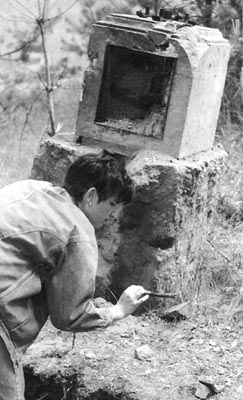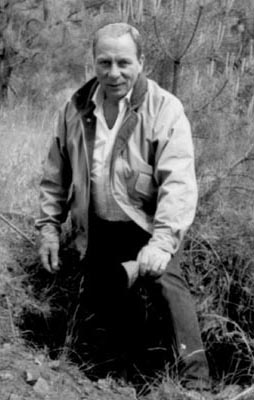A VISIT TO HERMANN GÖRING’S CARINHALL

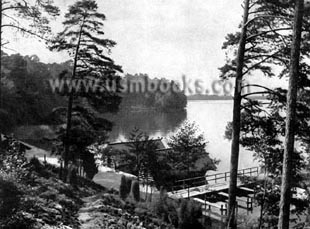

After the death of Paul von Hindenburg in August 1934, Adolf Hitler also took over the function of State President and Hermann Göring became more involved in representing the Reich. Hitler’s Haus Wachenfeld (expanded in 1936 it became the “Berghof”) on the Obersalzberg above Berchtesgaden was used to receive official state visitors, but it was quite small and too far away from Berlin. It was decided that Carinhall would be enlarged to become a “Haus des Reiches”, an official state residence. With a government decree the Schorfheide-area, including Göring’s Carinhall, was put into a foundation owned by the Prussian State, but Carinhall was to be at Göring’s disposal as long as he was alive.
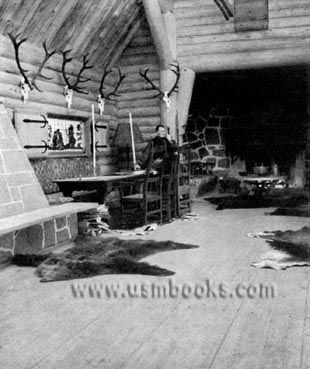
Carinhall became the official summer state residence of Hermann Göring and his staff in 1937. After the reconstruction, there was a 216 feet new wing, a large courtyard and a study library next to the old, existing structure which was incorporated in the new plan. The “Jagdhalle” (Hunt Hall) or large reception room was 72 feet long x 38 feet wide, had a giant fireplace and a 5 x 18 foot retractable glass picture window. Also built were Göring family quarters, a hunting trophy room, a bowling alley, cinema and a Bierstube.
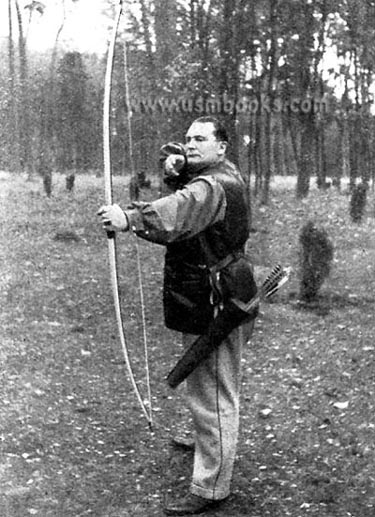
A separate staff building was 208 feet long and built in the same style as the main house. It housed living quarters for the staff, a doctor’s office, laundry, telephone switchboard, heating facilities, generators, 13 firemen, security personnel and garages. During the 1936 construction a stone terrace adjacent to the beach, a tennis court and a shooting range were also added.
More construction took place during the year 1939. Existing buildings were enlarged in this second round of remodeling. The already huge Jagdhalle was enlarged from 72 to 215 feet, a new main entrance was constructed and the courtyard was enlarged as well. Also added were a dentist office, a sauna and fitness room (with Elizabeth Arden massage machines), an indoor swimming pool and a new set up for Göring’s model train set which consisted of 321 feet of electric train tracks with tunnels, bridges and even miniature airplanes. The 1941 insurance value of the train set was 662,345 Reichsmarks ($265,000)!
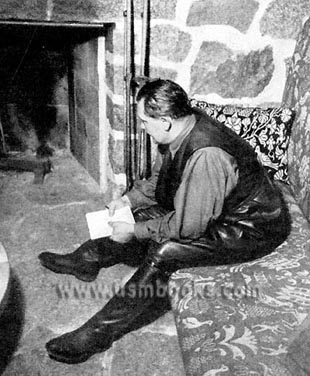
Right, Göring in front of the fireplace in the Jagdhalle.
Carinhall had a modern sewer system so nearby lakes would not be polluted. Some of the rooms of the estate had air conditioning and some had heated floors.
In 1941 a new road leading to the entrance of Carinhall was built. This road was later to be connected to the town of Friedrichswalde where a new railway station was planned. In 1943 two gatehouses were built and they are still there today.
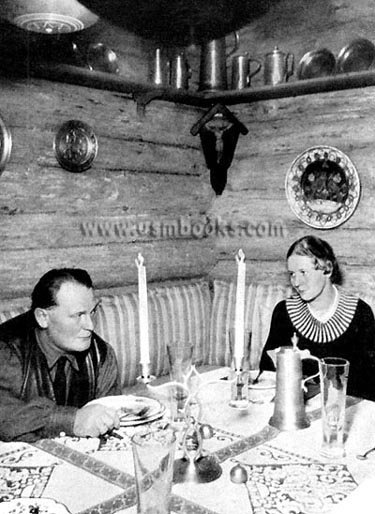
Operating Carinhall in 1942 alone cost the Prussian State government 475,000 Reichsmarks ($190,000). There were 20 permanent personnel, including 11 cleaning ladies. Three security rings encompassed Carinhall, just like at the Obersalzberg and one needed a pass to get in. Among Göring’s cars were a Buick and two Mercedes-Benz’s, including the famous 12-cylinder cabriolet. Garden operations cost about 20,000 Reichsmarks ($8000) per year (there were vegetable and fruit gardens as well as a complete farm which provided other “groceries”).
There was a miniature version of Berlin’s Sans-Souci Palace in the garden built of wood. It was a baptism present for Hermann and Emmy Göring’s daughter Edda, born on 2 June 1938, paid for by a collection taken among Luftwaffe personnel. She was baptised on 4 November 1938 and Adolf Hitler was her Godfather.
The second round of construction at Carinhall (1938 - 1942) cost about 6.6 million Reichsmarks ($2,640,000). The insurance value of Carinhall in 1945 was 10.1 million RM (4 million dollars)!
There were many famous names in the Carinhall guestbook: former American President Herbert Hoover, the Duke and Duchess of Windsor, aviator Charles Lindbergh, Benito Mussolini, the kings of Bulgaria, Rumania and Yugoslavia, Willi Messerschmitt, Heinkel, etc.
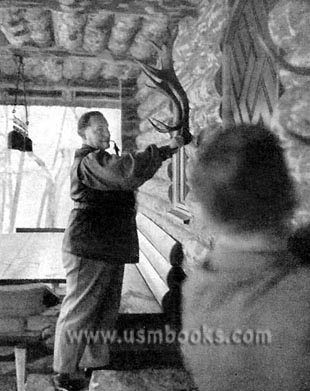
At the start of the war more changes were made at Carinhall. Air raid and bomb shelters were built for the Göring family, with separate ones for personnel and guests. A special bunker with telephone and radio facilities was constructed under Göring’s study, 36 feet below the ground. The 8 foot thick walls were lined with wood paneling. The bunker’s emergency exit at Dölln Lake was discovered in 1993, fully intact. A wooden copy of Carinhall was built on Lübelow lake nearby, in the hope of confusing enemy bombers. During the war a bus service was established between staff and government offices in Berlin and Carinhall to eliminate many single-car trips.
In 1944 new building plans for Carinhall were still being drawn up. Those plans included a 960 feet long wing that was intended to house the future Hermann Göring Museum. The art museum was to be opened on Hermann Göring’s 60th birthday, 12 January 1953. That construction project was never started.
Göring was well-liked by his staff and employees. There were special movie evenings for personnel at Carinhall and during the war employees were provided with venison from the Carinhall farm. Before Göring had Carinhall blown up in 1945, employees could take things from the house, but they had to sign receipts for the goods taken!
On 13 March 1945, as Soviet troops closed in on the Schorfheide, the last transport of valuables left Carinhall, headed south to Tirol and southern Bavaria.

There has been a lot of speculation about what happened to the body of Carin Göring. On 10 April 1947 a report was filed at the Provincial Government of Brandenburg after a visit to Carinhall by officials. They reported the coffin was found in the mausoleum with the mummified body of Carin Göring laying next to it, the head and feet missing. The torso was returned to her family and reburied in Sweden.
